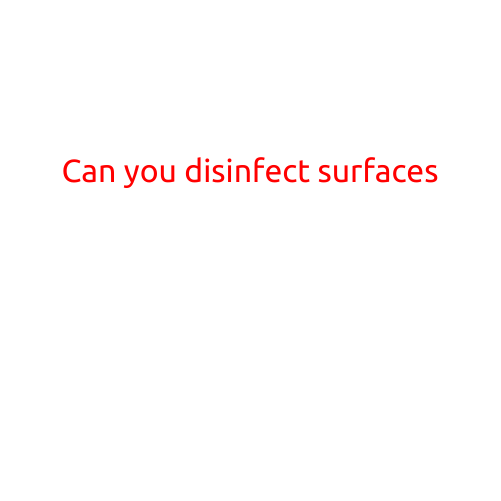
Here is a draft article on “Can you explain avoid cross-contamination”:
Can You Explain: Avoid Cross-Contamination
Cross-contamination - it’s a term that’s often thrown around in industries such as food service, healthcare, and pharmaceuticals, but do you know what it means? In its simplest form, cross-contamination is the transfer of microorganisms, allergens, or other substances from one surface, object, or person to another. But what does it take to avoid cross-contamination and why is it so important?
What is Cross-Contamination?
Cross-contamination can occur in a variety of ways, including:
- Touching a surface or object that has come into contact with a contaminated substance, and then touching a clean surface or object without washing your hands.
- Using the same utensils, equipment, or tools for both raw and cooked foods.
- Handling food or medications with bare hands and then handling clean products without washing your hands.
- Sharing personal care items, such as towels or skincare products, with someone who has an infection or carries an allergen.
Why is Cross-Contamination a Concern?
Cross-contamination can have serious consequences, including:
- Foodborne illnesses: If raw or undercooked foods come into contact with cooked or ready-to-eat foods, it can lead to the spread of bacteria, viruses, and other pathogens. This can result in foodborne illnesses, which can be serious or even life-threatening.
- Allergic reactions: Cross-contamination of allergens, such as peanuts or shellfish, can cause severe allergic reactions in individuals with allergies.
- Infections: In healthcare settings, cross-contamination of medical equipment, surfaces, and personnel can spread infections, such as MRSA or C. diff, between patients.
- Product contamination: In the pharmaceutical industry, cross-contamination of equipment, surfaces, and personnel can taint medications or other products, leading to serious health consequences.
How to Avoid Cross-Contamination
So, how can you avoid cross-contamination in your daily life? Here are some simple tips:
- Wash your hands frequently and thoroughly with soap and water, especially after using the bathroom, before handling food or medications, and after blowing your nose, coughing or sneezing.
- Use clean and sanitized equipment, utensils, and tools for food preparation and handling.
- Prepare raw and cooked foods on separate surfaces and utensils to prevent cross-contamination.
- Wear gloves when handling food or medications, and wash your hands after removing them.
- Clean and disinfect surfaces and equipment regularly to prevent the buildup of microorganisms.
- Label and separate clean and soiled laundry, personal care items, and food products to prevent cross-contamination.
Conclusion
Cross-contamination is a serious issue that can have serious consequences for health and well-being. By understanding what cross-contamination is, why it’s a concern, and how to avoid it, we can all play a role in preventing the spread of microorganisms, allergens, and other substances. Remember, cleanliness and hygiene are crucial in preventing cross-contamination, so make sure to always wash your hands, clean and sanitize surfaces and equipment, and follow proper handling and storage procedures to avoid cross-contamination in your daily life.





